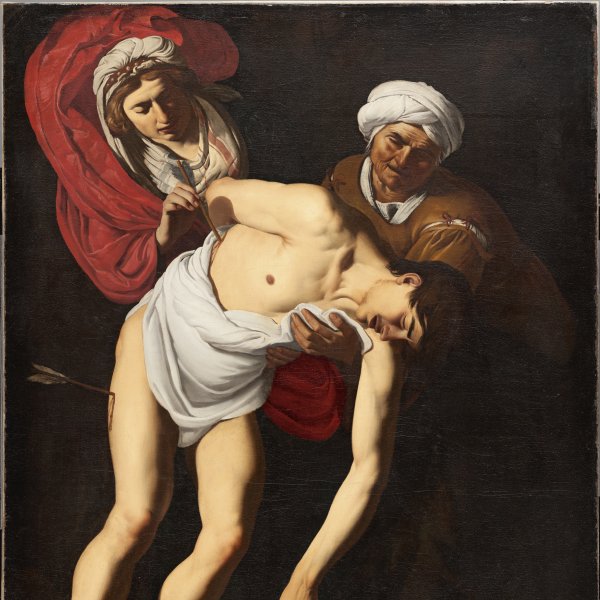Dirck van Baburen (attributed to)
Dirck van Baburen was born in Wijk bij Duurstede around 1595. Around 1599 his family moved to Utrecht where the artist is registered as an apprentice in the studio of Paulus Moreelse in 1611. Having completed his training he travelled to Italy, where he is first documented in Parma and later in Rome. In 1617 he took part along with Davis de Haen in the decoration of one of the chapels in the church of San Pietro in Montorio, for which he painted a Burial of Christ (still in situ). In Italy, Dirck van Baburen enjoyed great prestige and received commissions from important patrons such as Vicenzo Giustiniani and Cardinal Scipione Borghese, for whom he painted Christ washing the Disciples’ Feet (Berlin, Gemäldegalerie) and The Taking of Christ (Rome, Galleria Borghese) respectively. The exact date of his return to Utrecht is unknown but is thought to be around 1621. Van Baburen is associated with the Caravaggisti and was one of the leading members of this school. Despite the short time between his return to the Low Countries and his early death in 1624, he soon became one of the most innovative artists in Utrecht, introducing and establishing new stylistic and iconographic models that were soon imitated by other artists, both in genre scenes and history painting. Dating from this period is The Procuress (Boston, Museum of Art), a modern version in a Caravaggesque mode of an old, moralizing subject. Van Baburen was also one of the first painters to execute a painted version of the popular theme of Granida and Daifilo, based on the famous play Granida by Pieter Cornelisz. Hooft. The moralising content of some of his compositions, such as The Procuress and The Backgammon Players (New York, private collection), paved the way for the subsequent development of genre painting with a moralising undertone.





